See this related AmmoLand Daily Deal on how you can pick up the Caldwell LED Sled for just $136.49.
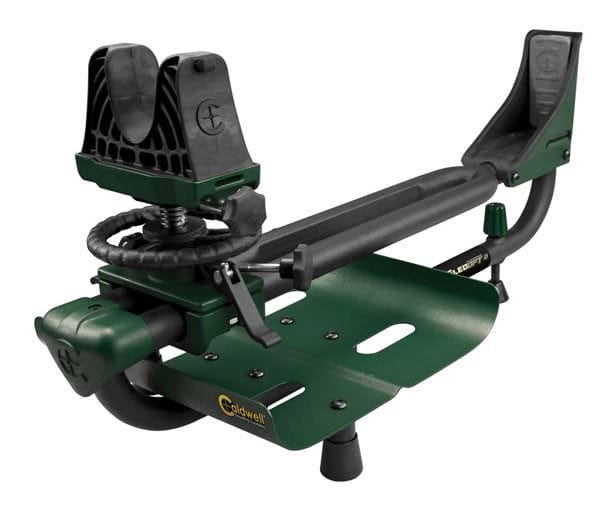
When the original Caldwell Lead Sled DFT rifle rest was tested by Chuck Hawks and the Guns and Shooting Online staff in 2007, it was not a replacement for the original Lead Sled. It was marketed as a more advanced system for dedicated shooters.
Caldwell Lead Sled DFT #ad
For those unfamiliar with the two designs, the DFT (Dual Frame Technology) had two steel upper frame tubes placed side by side, rather than the single tube of the original Lead Sled. The dual tubes permit using falling block and lever guns without canting or tilting the rifle. The twin tubes made the DFT more stable and less flexible than the original Lead Sled.
To quote from Chuck’s original article:
“For habitual range rats, like us, who are continually testing new rifles and ammunition, the new Lead Sled DFT is worth the extra cost. If you limit your range time to rifles with less than 15 ft. lbs. of recoil energy, you can probably get by without a Caldwell Lead Sled. For everyone else, one of the Lead Sled rifle rests is definitely the way to go for testing rifles and loads from a shooting bench. It also works great for patterning shotguns, especially when shooting hard kicking magnum shells and slugs.”
“There is a large sheet metal pan at the front of the Lead Sled DFT that is designed to hold two 25 pound bags of lead shot. If necessary, two more bags of shot, for a total of 100 pounds, can be laid across the top tubes. (We have never found it necessary to use more than two bags–50 pounds–of shot, even when shooting .416 and .458 Magnum rifles.) This massive addition of weight dramatically reduces the recoil of even the hardest kicking guns and makes sighting-in or testing loads a far more pleasant experience.”
The original DFT Sled had several very positive features. The dual frame alignment system permitted the front cradle to be moved fore and aft up to 22 inches to fit just about every rifle and shotgun on the market. The re-designed rear foot was more stable (better contact) on all shooting surfaces, yet it was easily adjusted for height. The inclusion of Caldwell front and rear support bags was a nice touch at no additional cost.
As outstanding as the above features were, the Lead Sled DFT’s front elevation adjustment was just as imprecise as the original Lead Sled.
Per Chuck Hawks:
“Although it looks much more massive with its large wheel adjuster, the DFT’s front cradle shaft still wobbles while elevation is being adjusted and the point of impact still shifts when it is tightened. A polymer bushing in the lower part of the frame to help keep the elevation shaft centered would be a big improvement.”
Despite its shortcomings, the Lead Sled DFT was a superior rest. Once a shooter was aware of the deficiencies, they were easy to work around. Nevertheless, in 2017 we were anxious to see what improvements had been made with the new Caldwell Lead Sled DFT 2.
Suffice it to say that all of the advantages of the original Lead Sled DFT are present in the DFT 2. As with any second-generation device, we were interested in discovering what new features had been added. However, we were more interested in determining whether Caldwell could correct the wobble and tilt in the front cradle.
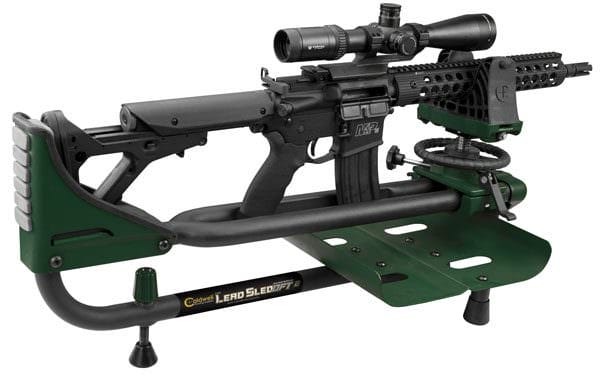
New Lead Sled DFT 2 Features:
First, they have replaced the front and rear bags with a hard-foam front rest and rear pad. These are obviously cheaper than the bags used in the original DFT.
However, they will not be subject to degradation and deterioration due to weather so that we can live with them.
The dual frame alignment system on the DFT 2 permits movement of the front cradle fore and aft up to 18 inches (down from 22 inches on the DFT). This is because the frame tubes are now welded together at the back for additional strength and stability, a definite improvement. The windage adjustment has been substantially improved to where it is useful and precise when compared to the original.
The elevation adjustment wheel now rests on ball bearings for smooth operation. However, when we lowered the elevation adjustment, sometimes we had to tap the cradle to make it drop, which can be irritating.
Improving the DFT 2:
Now we come to the wobble and tilt of the front platform. Unfortunately, the front cradle of the DFT 2 has the same wobble/tilt problem as the original Lead Sled DFT. It is a basic design flaw with respect to the cradle and its attachment to the elevation shaft. The cradle is fitted to the elevation worm-gear shaft by a single screw into the center of the shaft. A small screw into the center of a 7/8 inch rod cannot and will not stabilize a 6×3 inch platform.
Jim did not want to work around the problem, as most people did with the original DFT Sled. He wanted to find a solution. After considerable thought, Jim applied some JB Weld Steel on the top of the worm gear shaft (keeping the screw hole clear) and inside the cup on the base of the cradle that fits over the shaft. He re-installed the cradle on the shaft, tapping it with a rubber mallet to ensure that it was completely seated, and then tightened down the screw.
If it worked, there would be no more tilting of the cradle and a reduction of the elevation wobble. It worked, well, almost completely. The cradle does not tilt with recoil, and there is virtually no wobble when the cradle is raised up to 1-1/2 inches.
However, the wobble is still present when raised to the 2-1/2 inch maximum. The wobble at the upper end of the cradle’s elevation could probably be eliminated, as Chuck stated in 2007, by adding a polymer bushing at the base. If one accepts the limitation on the front elevation adjustment, you can compensate for that extra inch by raising or lowering the rear foot.
Caldwell Lead Sled DFT2 Specifications:
- Up to 2.5 in. of elevation adjustment (we recommend 1.5 in. max)
- Skeletonized front rest has non-marring material
- Non-marring rear cradle with Shock Eliminator Technology rear pad
- Fingertip rear elevation adjustment
- Dual Frame Technology accommodates AR mags (and lever action rifles)
- Baffled tray keeps lead shot bags in place and holds up to 100 lbs. of lead shot
- Rubber tipped feet for no-skid support on any surface
- Weight: approx. 24 pounds
- Dimensions: Length 30 in., Width 12 in.
- MSRP: $259.99
Live Inventory Price Checker
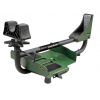
|
CALDWELL Lead Sled 3 | KYGUNCO | $ 122.99 |
|

|
Caldwell Lead Sled 3 Shooting Rest with Weight Tray Adjustable Tube Steel Frame | Optics Planet | $ 194.99 $ 141.07 |
|
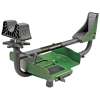
|
Caldwell Lead Sled 3 Shooting Rest | GunMag Warehouse | $ 194.99 $ 149.99 |
|
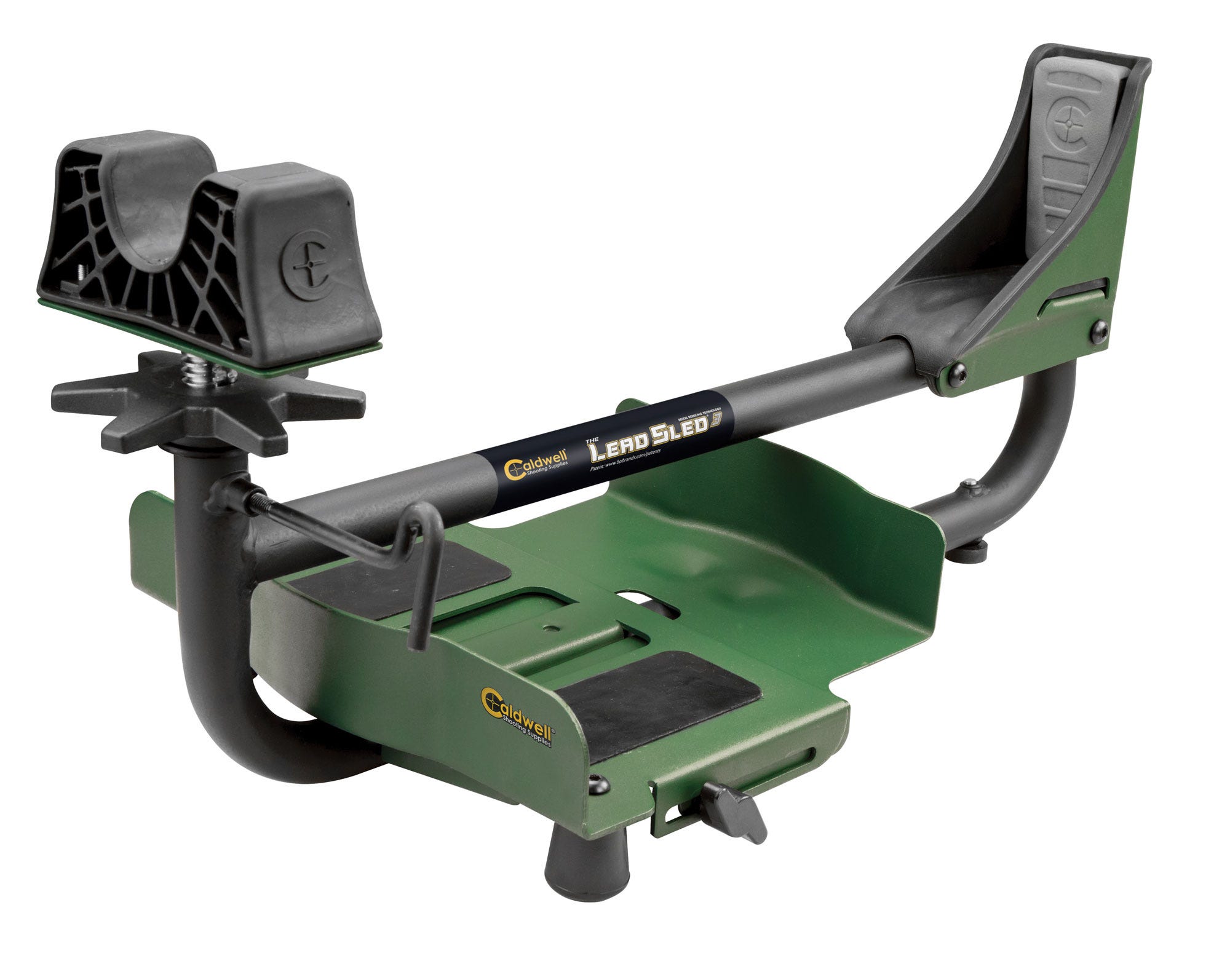
|
Battenfeld Caldwell Lead Sled 3 Green | GrabAGun | $ 130.99 |
|
The Caldwell Lead Sled DFT 2 is well worth the money, as is the extra $5 for the JB Weld to correct the tilt and ameliorate some of the wobble problems. We will be keeping the DFT 2, since we are “range rats” of the first order, and we think this is the best recoil-reducing shooting rest, for the money, on the market.
About Jim and Mary Clary:
Jim and Mary Clary have co-authored over three hundred and fifty articles (and counting) on shooting and hunting. You can read many of them on AmmoLand News.

Disassemble the front head and tighten the set screw that hold the front saddle to the screw post. It makes a world of difference. If the unit is set at it’s lower adjustment range, a 30 round AR magazine encounters the weight plate. After less than 100 rounds fired the fake leather in the rifle butt cup was torn and had to be beefed up with Gorilla/Duct tape. If I had it to do all over again I’d just build my own out of Uni-Strut(slotted mechanical channel) and my own bags. As an added plus it would be heavier from… Read more »